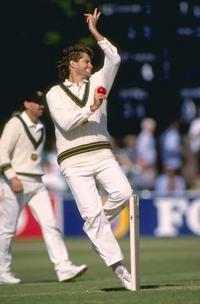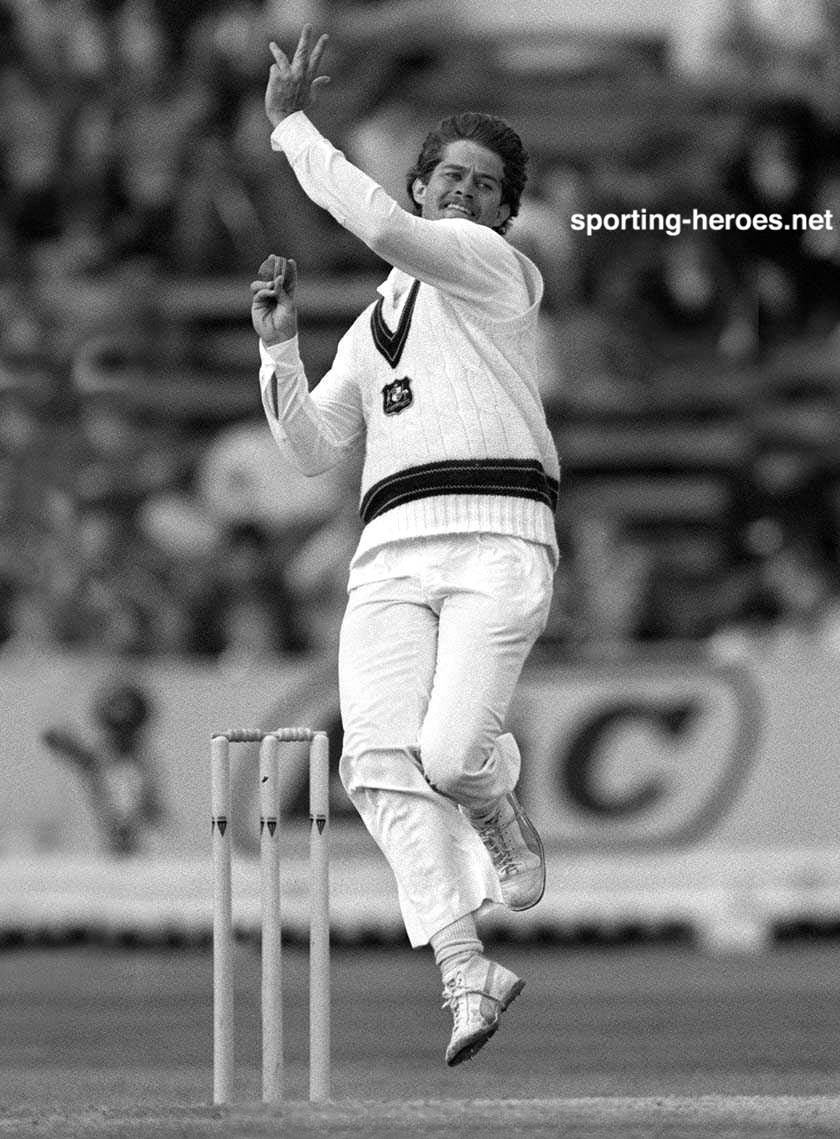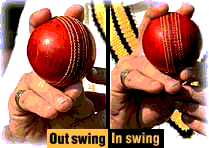Bowlers can generally be divided into 3 types: spin, medium and pace. Within these 3 general types there are further sub types such as off-spin, leg-spin, seam, in-swing, out-swing etc. The list can get confusingly long when one adds considerations of left and right arm, tall and short, front and side on and then add to the mix subtle gradiences of pace and flight.
Common to all bowling however is the ability to utlise the unique nature of the cricket ball. In learning about swing bowling, a bowler ought to appreciate the peculiarities of a cricket ball which can be taken advantage of in gaining the competitive edge. Therefore lessons in swing form the next fundamental level which can then be built upon to enhance other types of bowling. Although a golf or baseball also swing, the reasons are usually quite different as to why a cricket ball will swing.
The seam of the cricket ball is at the heart of the cause. It divides the ball and provides an irregularity, like night and day. What we then do with that division can then be compared to the four seasons of the year. They say variety is the spice of life and thus it is with cricket. These little stitches make a big difference.
It is at this point of the course we hope participants realise that their own new ball is not just some sort of possession to make them feel good about coming along. It is the main tool they will be working with over the next 4 weeks and every encouragement will be made to look after their new possession. Like the craftsman who takes care of his tools the rewards will be rich if they do.
No type of bowler is more concerned about ball maintenance and shine than the swing bowler. While the pace bowler is gifted with a hard shiny new ball to give him all sorts of assistance, and the spinner wold love to see all shine disappear to enhance his handy work, the swing bowler stands between the two ready to take advantage of the ball which is not quite new, but still capable of being shined at least on one side.
Swing bowling is a combination of science and art - the blending of well known aerodynamic and atmospheric principles with pragmatism . To this day no scientist has been able to fully explain with any confidence how all the factors effecting swing bowling really work. Sometimes the ball will swing wildly. Other days it will hardly swing at all. It may swing late or early. And sometimes it may start swinging in precisely the opposite direction than it was intended.
For two weeks the clinic will be looking at all the factors that effect swing and how to make the most of them. This is a big ask because the clinic�s 12 week duration could easily be devoted to swing bowling alone. By looking at the ball, action, pitch, type of weather and then experimenting with proven techniques as a base, the clinic hopes to provide participating players with a firm base to later develop their skills with confidence and intelligence.
1. The Theory of Swing � why a cricket ball will swing
- Shine
- Atmosphere
- Action � Side on vs Front On
- Speed & Length
- The Rudder Effect
- The 4 pivot points Shoulder, Elbow, Wrist and Fingers - keeping the seam straight
- �Reverse� Swing
- �Slobber�or �Weighted� Swing
(Practical � Demonstration of Grips and Alternatives)
2. The Practice of Swing
- Ball Care and Maintenance
- Grips and Ball Position - Variations
- Getting Side on/Getting Front on
- Crease Position and Angle
- Outswing vs Inswing � Mixing it up.
- Keeping the seam upright � Wrist Position. Flicking the Fingers
- Working out the batsman and game position
- Attacking Lengths vs Defence Lengths - the Diminishing Zone
- The ideal speed for swing
- Setting your field
- Experimenting
- The Corridor of Uncertainty
- Why batsmen like bananas and pies
3. Variations of Swing
- Speed - Faster and Slower Balls
- Length - Yorkers and Bouncers
- Seam Movement or Why it�s not swing and achieving both with the same ball
- Letting a Bad Pitch do your Good Work
- The Wicket Keeper and Stumpings � using code
- Cutting the ball - why it�s not spin or swing and achieving speed and direction variation with the same ball.
- the difference between swing and seam bowling and why you can have both.




